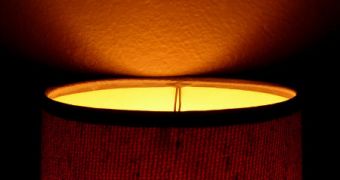In the not-so-distant future, people could benefit from the fast navigation speed of a broadband Internet connection by simply turning on the lamps on their desks. A group of researchers envisions using this medium to broadcast the connection, and are scheduled to make a presentation of their proposed system at the upcoming optical fiber communication conference, to be held in San Diego. The German team believes that future innovation in the field of optics will eventually allow for wireless signals to be encoded in light, something that many scientists are working towards as we speak.
“The advantage is that you'd be using light that is already there,” explains researcher Jelena Vucic, who is a member of the research team. She is based at the Fraunhofer Institute for Telecommunications, Heinrich-Hertz-Institute, in Germany. Together with her colleagues, the expert managed to somehow use the potential synergy between light and data, and the group plans to present its findings between March 21-25 in San Diego, at the Optical Fiber Communication Conference and Exposition/National Fiber Optic Engineers Conference (OFC/NFOEC).
Modern homes are outfitted with WiFi connections, that supply the radio frequencies needed to send over wireless signals. But the issue with this approach is that the system has a limited bandwidth, and experts are unconvinced that the already-crowded radio spectrum will allow for any further expansion. Therefore, coming up with alternative new ways of doing this seem like the logical thing to do, and this is precisely why the German team has taken such an interest in the issue. Many experts around the globe have accurately pointed out the fact that the bandwidth of visible-frequency wireless signals is as wide as anyone could possibly want.
However, until now, no one managed to figure out a way of tapping into it, and using it for data encoding and transfer. Light can be used for encoding in a simple manner, the German team says. All the light sources in a room would flicker in unison, but several million times faster than the human eye could detect. No person would be bothered by this, but the strength of the signal would be very large for a very simple reason – light doesn't travel through walls, and therefore the data it encodes is less likely to suffer from distortions or other interferences. The Fraunhofer experts say that LEDs would perform this job admirably.

 14 DAY TRIAL //
14 DAY TRIAL //